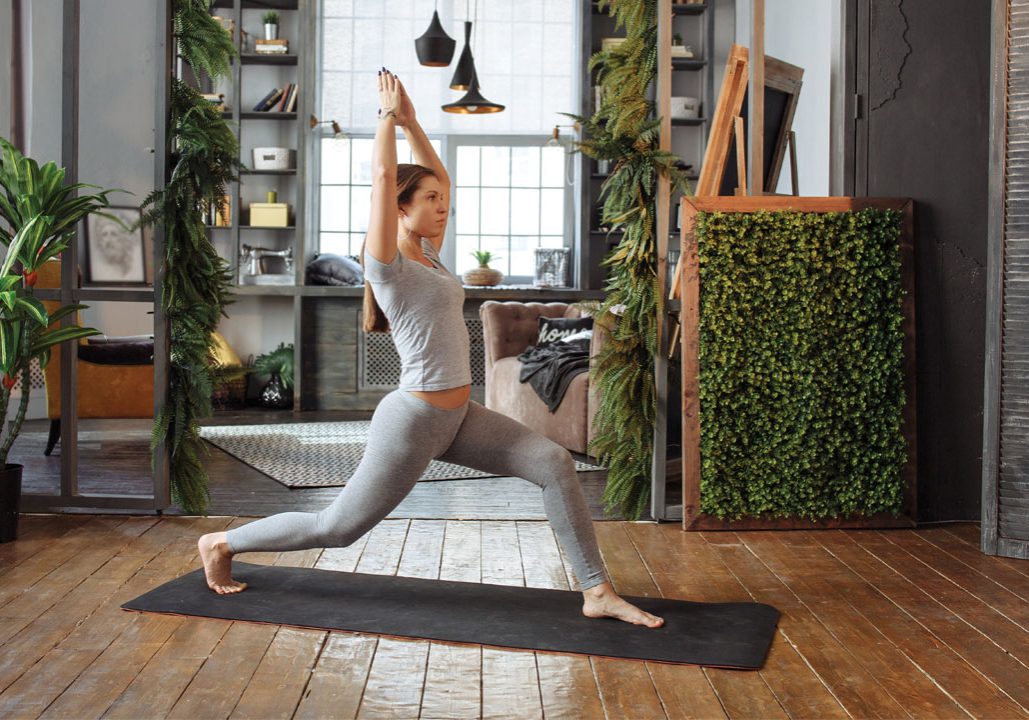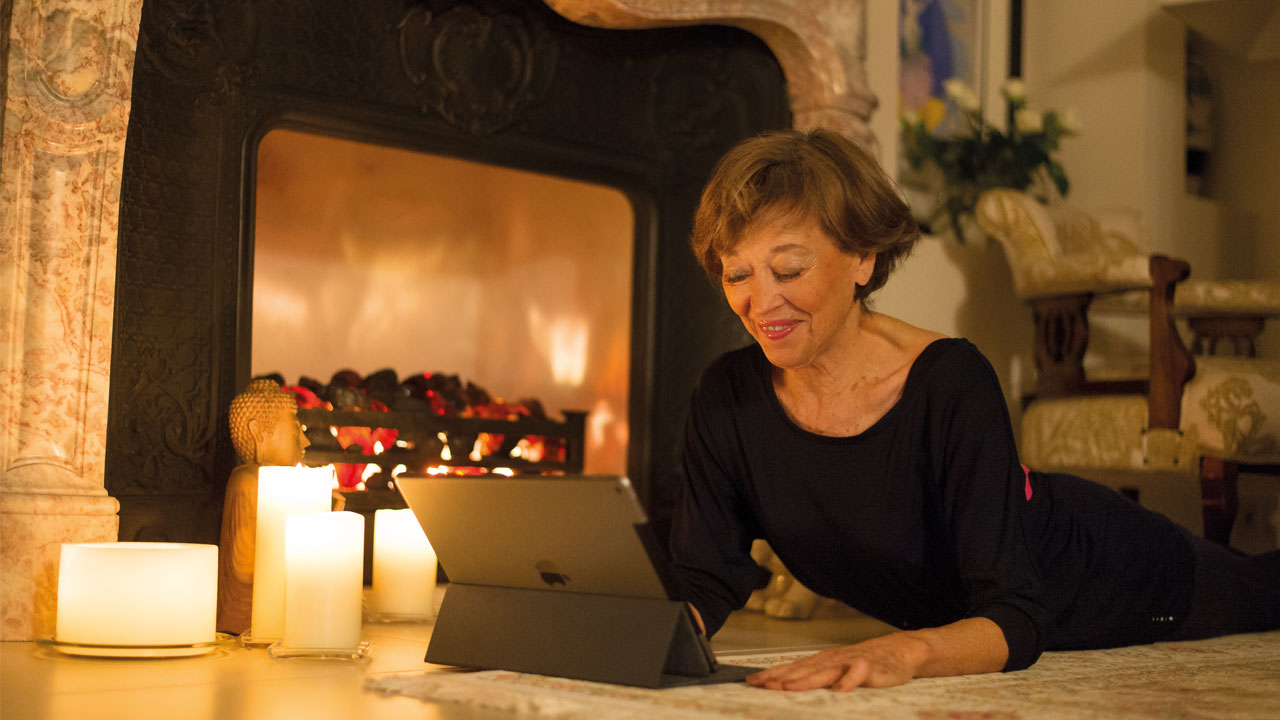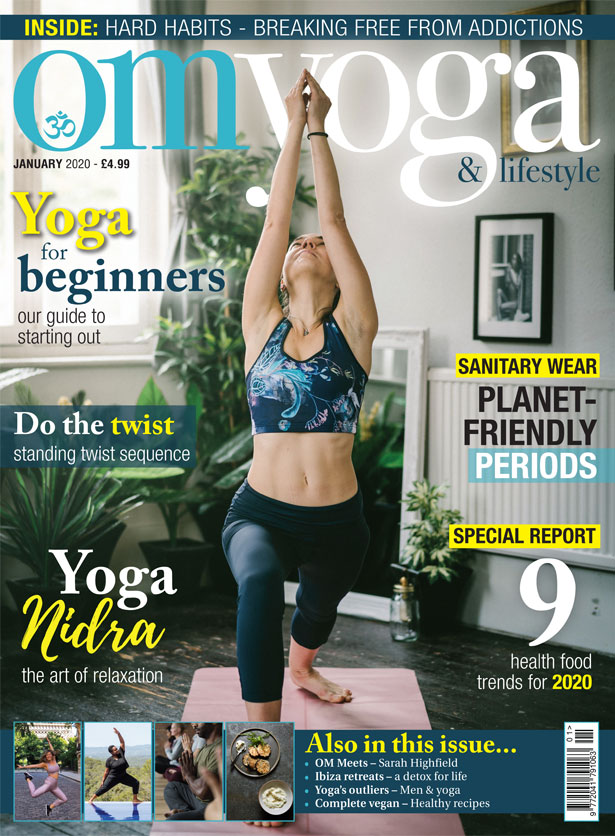
Beginning yoga at home
Why there’s no place like home when it comes to starting a yoga practice. By Kat Farrants
There are so many wonderful reasons to start a regular yoga practice. Many start yoga to get more flexible, some to get stronger, others are just curious.
Like many teachers, I started years ago, so in reality, it’s hard to remember what it was like to start out. But after I first encouraged my mum to try yoga to help with her painful lower back seven years ago now, I have been following her yoga progress.
My mum started her practice aged 70. So when I hear from folks that they’re too old to get started, I’m reminded that the biggest barriers to starting a regular home practice are in our mind. Bodies change much more easily than our minds! But amazing things can happen if you keep an open mind.
Although my mum started yoga to help her back pain (which has now gone), other remarkable things have happened too. Seven years later she is stronger and more flexible for sure, but also her osteoporosis has reduced significantly: her bones at 77 are more dense than they were even aged 60!
Her zest, vitality, energy levels are through the roof but it is the yoga philosophy, the teachings of living yoga off the mat that have really changed her. How wonderful to find out that doing yoga isn’t something you do for an hour each day, but a whole way of looking at life and helping to navigate through it with a kindness and openness of heart.
There are so many reasons to start a yoga practice and my mum is living proof to me of why I practice. But there are lots of people for whom a studio class just isn’t for them. They can be expensive! My mum wouldn’t go to a studio because she doesn’t enjoy going to the packed local classes. She is also a little hard of hearing, so studio classes may be a bit embarrassing if you can’t hear the teacher. Being short on time, she prefers the convenience of a home practice instead of travelling to the studios. Now, she literally puts her daily class in her timetable, as if she were going to the studio and trots off to the little shed at the end of her garden, her ‘woman cave’, where she rolls out her mat and diligently practices every day.

Because the mental barriers to a home practice can be so high, people often lack the motivation for it, so it’s really important to schedule it in, as you would with anything which was important to you.
For so many, studios are simply unaffordable or too expensive. Moreover, there are many people who have conditions which prevent them from getting out, or who are a long way away from studios. Or like me, they just don’t really enjoy the studio experience. That’s not to say that my mum and I don’t also see a teacher — I try to go on a retreat twice a year for the community aspect and also to get alignment hints. My mum also sees a private teacher once a month, which is a wonderful way to keep us all on track. Many beginners classes are just so large that it’s impossible for the teacher to check the alignment of all the students at once. Perhaps it’s even more dangerous for students to believe that they are being checked and doing the right thing when in fact the teacher simply can’t see everyone at once. And many students can feel that their alignment is being checked when in fact it isn’t.
Because it can be so hard to discipline ourselves to practice yoga at home, my advice is to start with 10 minutes a day. I know it seems inconsequential, but it works! The biggest changes happen with small steps and it’s so much more powerful to practice just 10 minutes every day than one hour once a week. Plus, you may find that soon you enjoy your home practice, and the 10 minutes becomes 20 minutes, which can become half an hour. And you never know, you may find your home practice fitting around your lifestyle like mine does — so that you might start with just 10 minutes in the morning, but then you find yourself on a walk and incorporating some breath work and qigong moves. Then before bed you might give yourself the gift of getting into your PJ’s and then doing a lovely restorative class before bed.
There are so many wonderful ways to incorporate a home practice into your life. It’s tempting to wait until we have our ‘sacred’ practice area in the house of our dreams with the candles and locked door against partners and pets. But you know what, life is messy and our yoga is a beautiful reflection of our life. We can perhaps learn, through our home practice, to embrace the imperfections of our life, the messiness, the pets, the noise and the hullabaloo that most of us live with, and take that into our practice. Because really, our yoga practice is our way of living, and just saving it for the sacred hour in the studio is, well, a bit of a shame.
The lovely thing about a home practice, as well as developing the often-forgotten muscles of discipline and self-motivation, you learn to trust yourself; you know that you are the kind of person who can commit to something! You also learn to develop a sense of responsibility.
You don’t simply do something because a teacher says it. You check in with yourself, think what is right for you to do right now. You are more likely to learn what is good for your particular body this way. In fact, yoga used to always be taught 1:1, which is by far the best way, so that you develop a sense of responsibility for your own body and the experiences you put it through. There are so many yoga injuries, many of them caused by people repeatedly over-stretching themselves showing off at a studio and not doing a practice suitable for their particular body at this particular moment in time (just because the 7.30 a.m. class fits your timetable, it doesn’t mean that it fits your body!). Just glancing around any studio room will have you seeing that we’re all vastly different. Our physiologies are different, and also our experiences and psychologies are different. Large yoga classes can so often be a ‘once size fits all’ experience, which is so far away from the yoga taught years ago.
Starting with a home practice you know that you’re a beginner and understand to take it easy. You listen more carefully, you have no false sense of assurance, you are able to customise and bespoke your experience. You are more likely to swiftly gain awareness of what you’re not doing right, or what doesn’t feel right. Students can gain an awareness of their embodiment quicker than those in large classes, and this is the most helpful thing of all. I advise home yoga beginners to start with really good guidance. Yes, there are plenty of free videos available on YouTube, but I would gravitate to the most senior teachers, the teachers’ teachers, to guide you through the beginning stages — this is why we take such an effort to handpick all Movement for Modern Life teachers. And then do find a teacher to practice 1:1 with every month or so, so that you can be guided safely into your own practice.
Kat Farrants is founder of Movement for Modern Life ‘the Netflix of Yoga’: movementformodernlife.com/beginnersyoga




